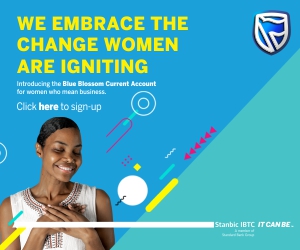Health
WHO study reveals why men die earlier than women


BY: Sandra Ani
A World Health Organisation (WHO) report says men are more likely to die earlier than women due to uneven access to health services.
According to “2019 World Health Statistics” published on the WHO website on Thursday, the trend is similar in low and high-income countries as men often seek health care services less than women.
The health statistics, which according to the report, was disaggregated by sex for the first time, stated that women outlived men everywhere in the world particularly in wealthy countries.
The report said that where men and women faced the same disease, men often seek health care less than women.
It said that only by intensifying efforts to achieve Universal Health Coverage (UHC) can countries close this health gap and improve the health and wellbeing of everyone.
“Women outlive men everywhere in the world particularly in wealthy countries and the World Health Statistics 2019 disaggregated by sex for the first time explains why.
“Attitudes to healthcare differ. Where men and women face the same disease, men often seek health care less than women.
“In countries with generalised HIV epidemics, for example, men are less likely than women to take an HIV test, less likely to access antiretroviral therapy and more likely to die of AIDS-related illnesses than women.
“Similarly, male Tuberculosis (TB) patients appear to be less likely to seek care than female TB patients.
“Where women can access health services, maternal deaths decrease thereby lengthening women’s life expectancy.
“In many circumstances, men access health care less than women. The report also highlights the difference in causes of death between men and women.
“Some are biological, some influenced by environmental and societal factors while some are impacted by availability of and uptake of health services,” the report said.
It said that of the 40 leading causes of death globally, 33 causes contribute more to reduced life expectancy in men than in women.
The report stated that in 2016, the probability of a 30-year-old dying from a non-communicable disease before 70 years of age was 44 per cent higher in men than women.
According to the report, global suicide mortality rates are 75 per cent higher in men than in women in 2016.
The report revealed that death rates from road injury were more than twice as high in men than in women from age 15 adding that mortality rates due to homicide were also four times higher in men than in women.
The report quoted Dr Tedros Ghebreyesus, the WHO Director-General, as saying that breaking down data by age, sex and income group was vital to understanding who was being left behind and why.
Ghebreyesus said that behind every number in the World Health Statistics was a person, a family, a community or a nation.
He said that the task of the organisation was, therefore, to use the data to make evidence-based policy decisions that would move everyone closer to a healthier, safer and fairer world.
“The gap between men’s and women’s life expectancy is narrowest where women lack access to health services.
“In low-income countries, where services are scarcer, one in 41 women die from a maternal cause, compared with one in 3,300 in high-income countries.
“In more than 90 per cent of low-income countries, there are fewer than four nursing and midwifery personnel per 1000 people.
“The report was published to coincide with World Health Day commemorated on April 7 yearly.
“This year, the celebration focuses on primary health care as the foundation of UHC; the new WHO statistics highlight the need to improve access to primary health care worldwide and to increase uptake.
“One of WHO’s triple billion goals is for one billion more people to have UHC by 2023.
“This means improving access to services especially at community level and making sure those services are accessible, affordable, and effective for everyone regardless of their gender,” the director general said.
Also, Dr Samira Asma, the WHO Assistant Director-General for Data, Analytics and Delivery, said that these statistics underscored the need to prioritise primary health care urgently to effectively manage noncommunicable diseases and to curb risk factors.
Asma explained that for instance, achieving something as simple as controlling blood pressure was just not happening on the scale needed and tobacco use remained a leading cause of premature death.
She said, however, that irrespective of the challenges, life expectancy has improved since 2000.
The director general said that between 2000 and 2016, global life expectancy at birth increased by 5.5 years which was from 66.5 to 72.0 years.
“Healthy life expectancy at birth which is the number of years one can expect to live in full health has increased from 58.5 years in 2000 to 63.3 years in 2016.
“Life expectancy remains strongly affected by income; in low-income countries, life expectancy is 18.1 years lower than in high-income countries. One child in every 14 born in a low-income country will die before their fifth birthday,” Asma said.
She said that the organisation has for the first time published a Global Health Statistics disaggregated by sex.
Asma said that this new analysis has provided insights into the health and needs of people around the world. (NAN)
Health
FP2030 Report Links Family Planning & Gender Equality
…The 2023 data report reveals that more women and girls than ever have access to family planning
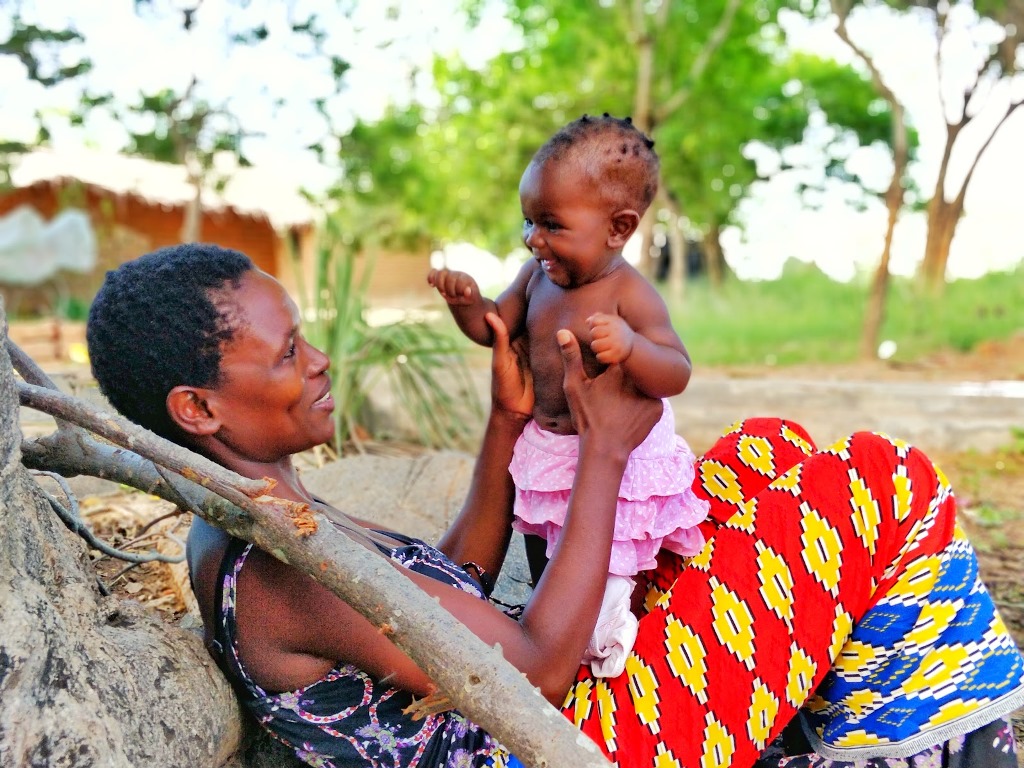

FP2030 has launched its 2023 measurement report, Meeting the Moment: Family Planning and Gender Equality.
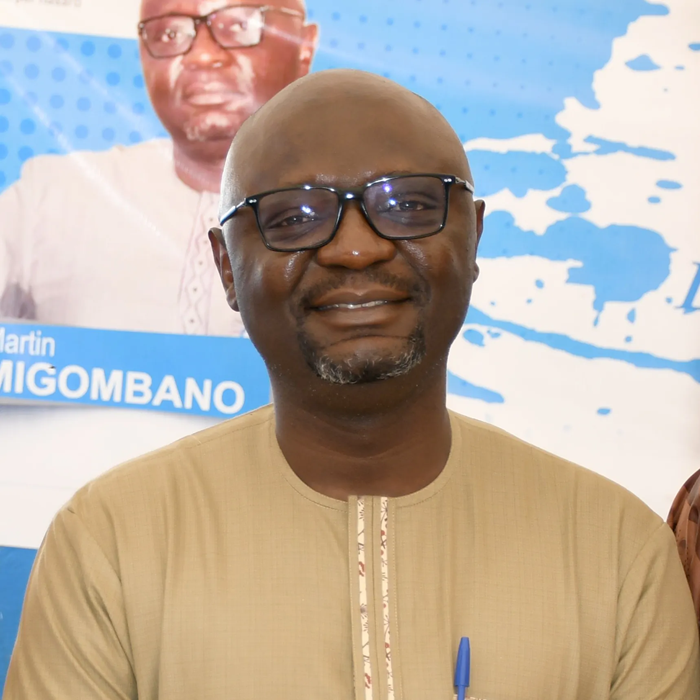

The 2023 report shows significant achievements in family planning across the globe, even in the face of stagnant funding.
Speaking during the launch of the 2023 annual measurement report in Washington DC, Dr. Samukeliso Dube, FP2030 executive director, said:
“In this report, you will hear more success stories: more people than ever before are using voluntary, rights-based contraception. You will also learn more about the opportunities ahead.”
The links between family planning and gender equality are the central theme of this year’s measurement report.
The data set covers 85 countries, including for the first time Botswana and Namibia, two middle-income countries that have now made commitments to FP2030, and Jordan, which has moved into the lower-middle income category.
The report showed that in the 85 countries reviewed there are over 1 billion women of reproductive age; an estimated 377 million of those women are using a modern method of contraception, 92 million more than were using a method in 2012.
“This year’s report comes at a critical time in our movement. We are at the intersection of several crises: globally, 800 women are dying every day in childbirth. 218 million women in the global south countries have an unmet need for modern contraception – meaning they want to avoid a pregnancy but are not using a modern method,” added Dr. Dube.
The movement for rights-based family planning is an integral part of the global push for gender equality.
Gender is at the root of every person’s ability to make and carry out decisions about sex, contraception, and sexual and reproductive health.
As the global push for gender equality gains strength, FP2030 affirms the central importance of rights-based, gender-transformative family planning.
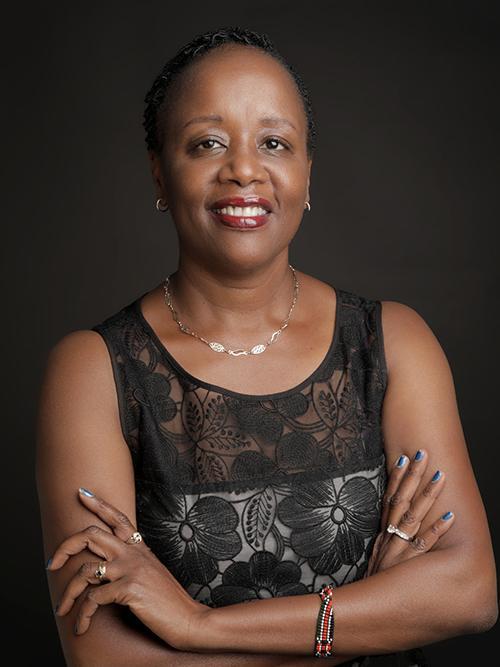

The report is the first to fully reflect the impact of FP2030’s move to decentralize from one secretariat in Washington DC, to five regional hubs in Nairobi, Kenya; Abuja, Nigeria; Kuala Lumpur, Malaysia; and Panama City, Panama; to ensure that the partnership is driven by regional priorities.
The report contains demographic updates from each region, as well as a special focus on postpartum family planning, a topic chosen by the Regional Hubs, as a high impact practice with demonstrated ability to improve maternal and newborn health outcomes and increase uptake of contraception.
Health
Cybercriminals Successfully Encrypted Data in Ransomware Attacks on Nearly 75% of Healthcare Organizations, Sophos Survey
Only 24% of Healthcare Organizations Were Able to Disrupt a Ransomware Attack Before Attackers Encrypted Their Data. This is the Lowest Rate of Disruption in 3 Years, reports SANDRA ANI


Sophos, a global leader in innovating and delivering cybersecurity as a service, today shared its sector survey report, “The State of Ransomware in Healthcare 2023,” which revealed that, among those organizations surveyed, cybercriminals successfully encrypted data in nearly 75% of ransomware attacks.
This is the highest rate of encryption in the past three years and a significant increase from the 61% of healthcare organizations that reported having their data encrypted last year.
In addition, only 24% of healthcare organizations were able to disrupt a ransomware attack before the attackers encrypted their data—down from 34% in 2022; this is the lowest rate of disruption reported by the sector over the past three years.
“To me, the percentage of organizations that successfully stop an attack before encryption is a strong indicator of security maturity. For the healthcare sector, however, this number is quite low—only 24%. What’s more, this number is declining, which suggests the sector is actively losing ground against cyberattackers and is increasingly unable to detect and stop an attack in progress.
“Part of the problem is that ransomware attacks continue to grow in sophistication, and the attackers are speeding up their attack timelines. In the latest Active Adversary Report for Tech Leaders, we found that the median time from the start of a ransomware attack to detection was only five days. We also found that 90% of ransomware attacks took place after regular business hours. The ransomware threat has simply become too complex for most companies to go at it alone. All organizations, especially those in healthcare, need to modernize their defensive approach to cybercrime, moving from being solely preventative to actively monitoring and investigating alerts 24/7 and securing outside help in the form of services like managed detection and response (MDR),” said Chester Wisniewski, director, field CTO, Sophos.
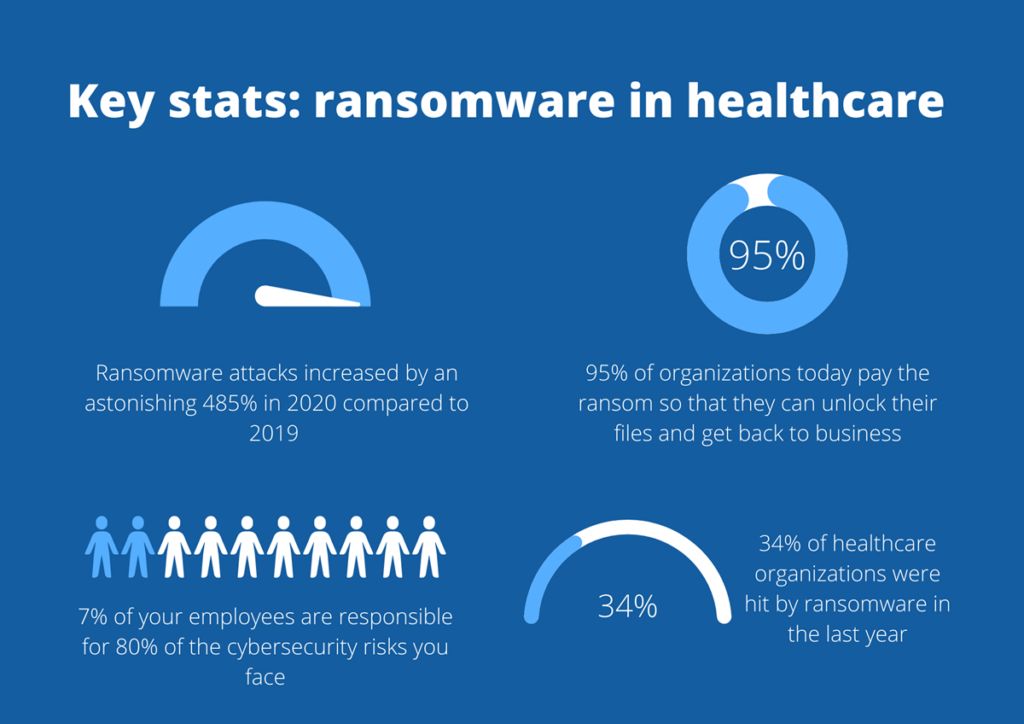

Additional key findings from the report include:
- In 37% of ransomware attacks where data was successfully encrypted, data was also stolen, suggesting a rise in the “double dip” method
- Healthcare organizations are now taking longer to recover, with 47% recovering in a week, compared to 54% last year
- The overall number of ransomware attacks against healthcare organizations surveyed declined from 66% in 2022 to 60% this year
- Compromised credentials were the number one root cause of ransomware attacks against healthcare organizations, followed by exploits
- The number of healthcare organizations surveyed that paid ransom payments declined from 61% last year to 42% this year. This is lower than the cross-sector average of 46%
“In 2016, the Red Cross Hospital of Córdoba in Spain suffered a ransomware attack that reached servers and encrypted hundreds of files, medical records and other important patient information. It was a major disruption to our operations and interfered with our ability to care for our patients. The stakes are high in ransomware attacks against healthcare organizations—and attackers know that—meaning we’ll always be a target. After this ransomware attack, we worked hard with Tekpyme to bolster our defenses, and now we have reduced our incident response time by 80%. I think the industry as a whole is making improvements, but there is still work to do, because of the constantly changing nature of cybercrime. Hopefully healthcare organizations can leverage the help that is available from security vendors such as Sophos to prevent a very real ‘threat to life’ if systems go offline due to a ransomware attack,” said José Antonio Alcaraz Pérez, head of information systems and communications at Cruz Red Andalusia in Spain.
“Cyberspace today is ripe with technically sophisticated actors looking for vulnerabilities to exploit. What all this translates to is a multidimensional cyberthreat of actors who have the tools to paralyze entire hospitals. Partnering with the private sector is critical to our mission. The information [they] share has real-world impacts and can save real businesses and real lives,” said Christopher Wray, FBI Director.
Sophos recommends the following best practices to help defend against ransomware and other cyberattacks:
- Strengthen defensive shields with:
- Security tools that defend against the most common attack vectors, including endpoint protection with strong anti-ransomware and anti-exploit capabilities
- Zero Trust Network Access (ZTNA) to thwart the abuse of compromised credentials
- Adaptive technologies that respond automatically to attacks, disrupting adversaries and buying defenders time to respond
- 24/7 threat detection, investigation and response, whether delivered in-house or by a specialized Managed Detection and Response (MDR) provider
- Optimize attack preparation, including regularly backing up, practicing recovering data from backups and maintaining an up-to-date incident response plan
- Maintain security hygiene, including timely patching and regularly reviewing security tool configurations
To learn more about the State of Ransomware in Healthcare 2023, download the full report from Sophos.com.
*The State of Ransomware 2023 survey polled 3,000 IT/cybersecurity leaders in organizations with between 100 and 5,000 employees, including 233 from the healthcare sector, across 14 countries in the Americas, EMEA and Asia Pacific.
Health
LUTH Doctor Slumps And Dies After 72hrs Call In The Neurosurgery Unit


Outrage As LUTH Doctor Dies After 72-hour Non-stop Shift
Tweeps have taken to X to share their thoughts on the death of a young doctor, identified as Dr. Umoh Michael, who died on Sunday after allegedly working 72 hours straight.
According to reports, Michael died during a church service at the United Evangelical Church on September 17. He was said to have worked a 72-hour non-stop shift at the Lagos University Teaching Hospital, Idi-Araba, where he was a resident doctor.
Doctors under the aegis of the Association of Resident Doctors, LUTH chapter, in a letter addressed to the Chief Medical Director, LUTH, Prof. Wasiu Lanre Adeyemo, attested to the fact that the young doctor was overworked.
They claimed Michael returned home at about 3:00 a.m. Sunday after a 72-hour shift in the hospital, adding that he had barely slept in their apartment before that day.
The statement partly read, “We the house officers are in deep grief over the loss of our colleague, a co-house officer (Dr Umoh Michael) who died on 17th September, 2023, after having a 72hrs call in the Neurosurgery Unit.
“He is said to have been on call 72hrs before arriving home on Sunday morning to get set for church service, reaching his worship center (United Evangelical Church) where he slumped in the church at about 11 am.”
“His roommate attested to the fact that Umoh Michael had barely slept in their apartment over the past one week as he was always on call or the day he returned home was around 3 a.m. after surgeries and other activities in the Neurosurgery Unit.”
Reacting to the sad incident, LUTH’s Public Relations Officer, Omolola Fakeye, who spoke on an online platform (not PUNCH) Online said, “It is not true that anybody worked for 72 hours. I have not been briefed about his death.
“We were at a programme yesterday (Monday), but I will find out; I can’t say anything now. I will check the medical report of what could have happened because anybody can say anything, but the medical report will show us what happened.”
May his soul rest in peace.
-



 Politics5 days ago
Politics5 days agoPresident Tinubu Bans Purchase Of Petrol-dependent Vehicles By FEC Members
-



 Entertainment3 days ago
Entertainment3 days agoWhy I’m Not Ready For Kids – Singer Burna Boy Reveals
-



 Entertainment4 days ago
Entertainment4 days agoMen Of The Lagos State Police Command Have Arrested Singer Portable
-



 News5 days ago
News5 days agoMath Teacher Accused Of Having Sex With 2 Students And Getting Pregnant For One Tearfully Reveals The Baby Was Taken Away From Her
-



 GROpinion2 days ago
GROpinion2 days agoExposing the Malicious Sabotage of MoMo PSB Project in Enugu Ezike
-



 News3 days ago
News3 days agoThe Peruvian Government Has Officially Classified Transgender, Nonbinary And Intersex People As “Mentally ill”






